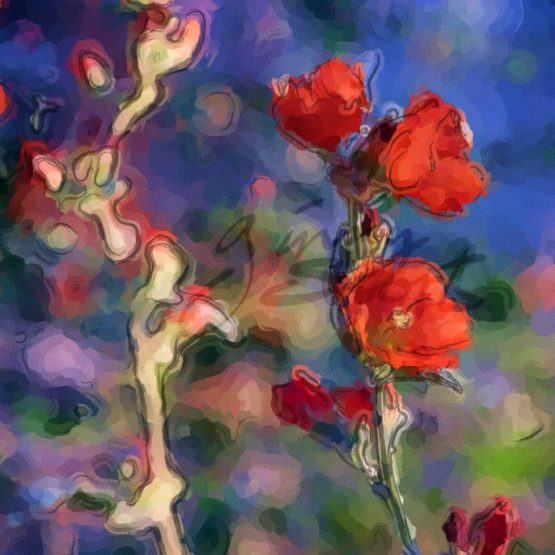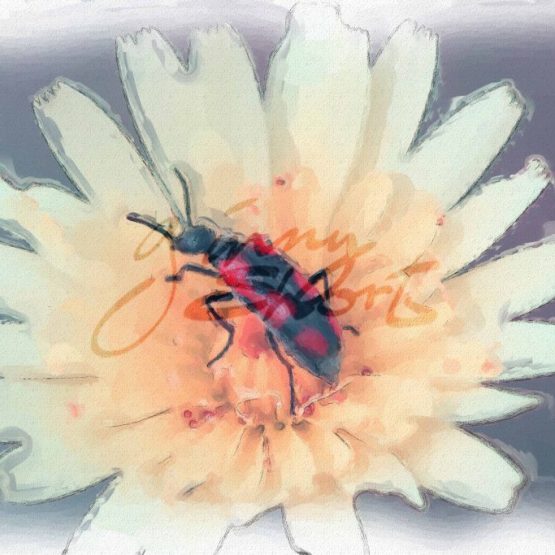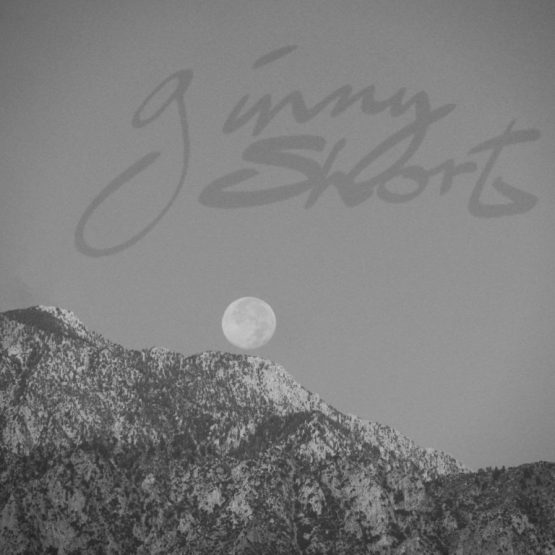landscape of drought

Originally published by Mohave He[art] Review
by ginny short
i long for water.
summer holds water in balance between heat and desire.
salt. and. water. are. everything.
an echo of our sentient thirst
abandoned in a landscape of drought.
all that is left is dirty brine.
all water and salt
compelled by a chemistry of hotdrywarmwet. storms.
but how do you tame lightning?
drought is my language.
drought speaks the language of balance.
audacious: one must be audacious to survive extremes.
the grit. the darkness. the luminescence.
Breaking the Back of Heaven

Originally Published by Mohave He[art] Review
by ginny short
Breaking the Back of Heaven
There are ghosts in Las Cruces. The small town looks tiny in memory, downtown streets etched like tattoos in straight lines, then twisted along the river, following the body contours of the valley. Red rooftops reflect dully in the bright sun. Adobe homes, old ranchos and farms stretch out, lazy, along the riverbank, the Rio Grande winding an “S” across the valley. Old church bells ring, still echoing the Catholic days of the conquistadores and padres. Ghosts of outlaws with blood on their shirts and Apache warriors brandishing war clubs walk with senoritas and their laughing eyes, cowboys with dust on their boots. And I walked with those ghosts. I can remember imagining the feel of ghost bullets whizzing by my cheeks, the laughter of Billy the Kid on the wind. I rode the bus to school through the community of Tortugas. My romanticized vision of Geronimo was confused by the kids I knew here – my Indian friends – who didn’t get enough to eat, who seemed to feed on bitterness and violence. I clung to romance and imagined that Geronimo or Red Sleeve rode beside me on that dusty road, feathers flying, horses kicking ass in the dust. There was an old hotel in Mesilla that closed when I was a teen. It had hosted governors of Spain, Mexico and America. It whispered in my imagination tales of murder and intrigue, madams and horse rustlers, corruption and velvet prosperity. These ghosts are probably what killed the old Inn. When it closed I managed to acquire a wooden tri-fold screen with paintings of a Mexican villa: a handsome Don with his magnificent women bustling about the patio in multicolored swag, pastoral gardens hung with flowers, maidens and handsome caballeros walking arm in arm, and behind them Indian peasants, backs bent toiling in the soil. Out the window of the bus on the way to school I could see migrant Mexican laborers in the fields picking chili and cotton, sweat dripping across bent backs. Some things don’t change.
valley ringed in mountains
sky so blue
it breaks the arch of heaven
spills out in landscapes
sacred profane
Voices of Desert Ghosts (Spring Wind 2013)

Originally Published by Mojave He[art] Review
by ginny short
It frets, it spins, it howls, it moans,
and as it calls, it slips, it stalls,
drops paper bits and dusty sand –
lost castoffs on my windowsills.
It fills up holes and covers dogs
barking anxious at the bleats
and creaks of swingsets in the dark,
and blankets lawns and garden seats.
It’s born, then dies, and then reborn,
and picking up anew with leaves
with flowers clutched in ghostly hands,
it dies and drops them and retrieves,
then madly whirls down alleyways
and skitters pebbles past the wall
where old folks sit and children play,
and strains of latin music call –
that on a calmer night might drift
from roof to roof through open doors –
tonight runs counterpoint and soft
to that discordant, windy score.
Ghosts of the American Canal

Originally Published by Mojave He[art] Review
by ginny short
It was still dark, only the fitful lights of Santa Isabel behind her and Calexico off to her right to light her way. She was falling behind, pushing her long black hair behind her ears and stumbling through fields of peppers. In just a short while the August sun would rise over the hills red, malevolent and it was already hot. The group ahead were shadows crouching low, moving north. Maria stopped and wiped the sweat off her face, twisted her earrings – the ones that Serafin had given her. “Come north,” he had said, “we can make a life together here.” She would join him soon, and the thought gave her energy. New York, here I come she thought, absently pulling on the “New York” t-shirt she wore, the one Serafin sent her, dark blue enough to blend in with the night. She pushed off again, following the pendejo Coyote and the strangers she was travelling with. Ahead of her they were darker shadows on the dark sky and getting smaller. She tried moving faster, stumbled and tripped.
By the time she reached the group her hands and arms were scratched and she smelled like the green leaves of the peppers. The Coyote hissed at her to keep up. The group had stopped, clustered, whispering by a dark line of water that stretched both ways as far as they could see. Like a silvery snake, it looked menacing. She had a fleeting moment of doubt until she thought of her hard-earned money in the Coyote’s pocket. No refunds, he would say. She sighed. The Coyote gave instructions. ¡Facil! he said, swim across, and someone will be on the other side to show you the way to cross the desert. Maria hated the sound of his voice, could feel him groping her in the night over and over again, telling her if she complained he would leave her behind or worse. One by one the others slipped into the water, fully clothed, heads bobbing as they splashed to get their bearings, move across. The current pulled them to the left until they disappeared in the darkness. The coyote grabbed her, making rude comments and groping her once more before pushing her towards the water. She took a deep breath, watched her black jeans sliding into the blacker water down the cemented side of the canal, the water cool in the sullen heat of a Calexico night. The water grabbed her relentlessly, twisted her, turned her as she tried to start swimming. But she floundered, her shoes like cement blocks as they filled with water. She tried to remove the heavy boots but she could not. She struggled, thinking the Coyote did not tell her that the river was a beast, that it did not want her there. She had been right to doubt. She flailed, trying to get back to the side, but the water pulled harder, pulled her away from the side. She struggled, choking, paddling into the darkness. When she touched the opposite side where it curved southward, she breathed a sigh of relief only to find there was no way to grab hold. She grasped and failed, tried to scream and failed. The swift moving water tugged at her relentlessly, and as it had filled her shoes, it filled her throat as she thrashed – alone and helpless. There was no sign of the others as the canal pulled her down, down, down.
She drowned in the American Canal in 1997. She was found on August 30. She is still unclaimed: her family, her friends do not know where she died. She was young – estimated to be 15-20. Both her ears were pierced and she wore a blue shirt that said “New York” in large letters. Her jeans were black as were her nice hiking boots. Her underwear was purple. The last thing anyone would ever know of her is her lacy, feminine, purple underwear.
The All-American Canal is called the lifeline of the Imperial Valley. The first canal to be built into the Imperial Valley was called the Alamo Canal, which went through Mexico around the Algodones Dunes, before turning south and returning to the U.S. This was the late 1800’s and the technology to breach the massive dunes had not yet been created. The task of building a canal destined to irrigate American soil through Mexico was a challenge. Failure to get appropriate permissions from the Mexicans who owned the land, failure to acquire appropriate funding, failure to work as a team and other problems resulted in the massive failure of the canal and the formation of the Salton Sea. The canal was eventually rebuilt inside the U.S. border – an American canal on American soil causes fewer problems and solidifies and establishes ownership of the water. The Alamo Canal became the All-American Canal. Hundreds of unidentified persons have since drowned in it – have learned the power of this All-American Water.
Sofia was in the prime of her life. She had two children who were living with their aunt in Los Angeles. She thought of the two: a little girl named Ana and Miguel her son, the eldest. Only two and four. Ana had been born in the United States, but Miguel had not. She had carried him all the way north wrapped in cloth against her breast, protected on the long trip to reach her sister, to escape the brute who was the father, her husband. She worked hard, had her baby girl, stayed low. When she was deported, caught in a raid at the clothing factory where she pieced together sleeves for blouses for white ladies to wear, her sister hid the children and she was taken back to Nicaragua and the husband who beat her. He beat her with impunity when she was returned to the village, angry at her for stealing his son. She vowed to escape again. There was nothing more important than getting back to her children.
She crossed herself. With luck she would be in Los Angeles again in a few days. It had been chilly out and the rains had not come. It was dry and the wind kept blowing, had been blowing for days now. She knew her way, she’d been this way before. She had walked her way back to Los Algodones where she stayed for a week, preparing for the next step. From here, though, this was different, this route. Her Coyote said it would be easier. It was cold and she knew the water would be colder so she pulled on two layers of pants, her black and her blue sweatpants, a white shirt, socks and athletic shoes that would serve for walking. Her earrings and two rings made of a pale white metal were the only thing she carried. She wrapped her ankles tightly with white bandages to help support them, to massage away the tenderness caused by miles of walking.
She walked in the darkness up the quiet roads of Los Algodones, ankles aching, but she was buoyed up knowing her children were so close. The moon would rise once she was on the other side, aiding her as she made her way through the pungent fields of the Imperial Valley. The line of the canal was dark and silent. She slipped in. She thought of her children. The line of the canal was dark and silent.
Sofia died in 2001; she was found floating in the canal on February 12. Few women are found in this deadly place: what was she escaping from or running to? She was found near Drop 2, close to where the Coachella Canal veers north towards my Valley. She had white metal earrings, a white metal ring on the middle right finger and a white metal ring on the left ring finger. Somewhere is a husband. Somewhere a brother, a father, a mother a sister who mourns her. Somewhere a child or two or three. She is lost to them.
Over five hundred people have drowned in its waters since it was trenched in 1942. Sixty-one immigrants died between 2011 and 2017. It has been called the most dangerous body of water in the U.S. It sits on the border between poverty and affluence, a deadly moat of liquid gold. To swim it is to risk dying, yet what can a girl do, trying to escape the skewed justice of poverty and crime in her home town? They come across with so little. What can a woman do, or a boy, a man, a mother? This stretch of the border, from the All-American Canal through the Jacumba Wilderness is one of the deadliest.
“Ai Ming,” the older woman whispered, “Hurry up. Hurry up.” The trip here had been long and arduous: days of rides in stinking tractor-trailers, sleeping in filthy shacks and buses that were filled with trash and the overwhelming odor of urine. The money, moaned Ying Mei. The money it has cost us. Hurry up, Ai Ming! Bribes to police, to their handlers. Number 7 and 8. That was what the handler called them. One of them had pushed them to carry cocaine with them for a reduction in their price. But Ying Mei knew that would not help. They had each stashed $300 away where the Coyote couldn’t find it. That was all that was left.
The women were lucky. They had seen their fellow travelers die by snakebite and shot by narcotic traffickers. This time they left all their belongings – in two plastic grocery bags – in a dirty alley in Mexicali. This time they did not need more, just their watches, rings and money. Their companions had been four men from China, a village far from their own, and two men and their wives from their own village. Ying Mei hoped for a better life for her daughter.
It was so close now. The man they paid to get them across the border told them it was much easier to cross the river. There were rarely Border Patrol agents here, unlike the crossings at San Diego or into Arizona. ¡Facil! He told them. Easy. $6,000 later here they were. Hurry, Ai Ming, hurry! The river did not look like a river. It was thin and lined with cement. Back in China they knew only the Yangtze River. This was no river. Their guide took pictures of them and all the others on his cell phone. He would send these on to the smuggler waiting for them on the other side with another dark and airless truck.
Hurry Ai Ming! Ying Mei slid first into the cold, dark water, Ai Ming behind her. The water pulled and pulled and the older woman started to struggle. Ai Ming came behind her and attempted to hold her up, but Ying Mei panicked and thrashed. She gasped and choked and pulled Ai Ming down with her. It turned silent. The moon was full as the women floated together down the canal in the dark night. Their embrace was slowly untangled by the warm fingers of the canal currents.
Ai Ming and Ying Mei were found in 2001. Ying Mei was between 18 and 50, Ai Ming was between 20-30. They wore ordinary clothing (blue jeans, red and white striped shirt) and shoes brown shoes, athletic shoes), like something anyone would wear (white bra, striped panties). Something I might wear (white socks), or you (black windbreaker). They both had lipstick in their pockets a chain with a watch or a pendant and $300.00 each in U.S. currency.
Dr. John Hunter – an ordinary man, a citizen of Southern California, describes himself as a conservative who cares. Dr. Hunter appealed to the Imperial Irrigation District Board of Directors, asked them to install life lines on this deadly passage, and one of the Directors replied, “I understand that…when an individual decides to cross the desert, decides to cross the mountains, decides to jump into the canal to swim across, they are taking their lives into their own hands. They have to be accountable for their own actions.” Another director says, “Why should the U.S. spend dollars on safety features in this canal when the people who are drowning in the canal, frankly, are criminals?” They get what they deserve. They deserve what they get. The lines were reluctantly installed under the outraged scrutiny of public opinion.
Lidia sat on the edge of the canal, trying to catch her breath. She fingered a key in her pocket, a pretty one with two hearts pierced by an arrow. This was a key to her family home. Her mother, her father, her five sisters were counting on her. Papa was ill and could not work. Mama took in laundry to try to make ends meet. Lidia was the oldest. It was her responsibility to help. She thought of Las Vegas and the aunt she had never met, but had heard from many times over the years (Mija, come up here. Life is good. I can get you a job.) In Las Vegas she would work and send money home to Mexico to help her mother.
The youngest sister, Delia, was pretty and delicate with blue eyes showing her Spanish heritage. She was only three. She cried when Lidia left the house that last day. The others – Marta, Sonia, Valeria and Mariana – held each other’s hands and called their best wishes out in tearful tones. Lidia could see the outline of the house, the dirt yard, the cacti and mesquite and the red dogs snuffling around the shade. Her heart was breaking with loneliness.
The group she was traveling with had made it across the canal, and had regrouped and rested when the coyote waved them on. The moon would rise in just a bit aiding them in their crossing of the desert. Follow the star there, he said, pointing out the North Star. They each had a bottle of water and not much more. Lidia tied her jacket around her waist and started walking. Her wet clothes cooled her, but they dried fast.
They walked in twos or threes, fifteen of them in all. The moon rose and the coyotes howled in the hills. Eeee, she thought, a coyote is a good name for that pendejo that got them across. She was tired. An hour later Lidia’s water was gone. The heat of the summer night was oppressive. She kept walking but the feeling of nausea started low in her belly, but soon washed over her in waves. Angrily she threw the empty bottle into the brush. Around her the night seemed ominous. How long, how far, someone asked. Lidia fell forward scratching her face on the brush. She lay there a moment, tried to pick herself up and vomited. Panting, she looked up at her companions who clustered nearby whispering, fear in their eyes. She crawled a few feet then collapsed on the dark soil. One of the men said, why leave such a good jacket on a dead woman? Another said she would not need those boots. Lidia could hear but could not comprehend as the nausea turned into darkness.
If you manage to cross the border, you still have to cross the desert. The Jacumba Wilderness is hell. Lidia made it this far, but died in the desert in 2011, her bones lay exposed to the brutal sun for six months or more before she was found. Near her bones her blue jeans, bra and green spaghetti strap shirt are all that is left of her. She had a key; a unique key, a household key with two hearts pierced by an arrow. Where is her house? Is her family still there, waiting? She’ll never walk that threshold again.
At one time, these unnamed dead were buried in paupers’ graves near Holtville, California, in graves marked “John Doe,” and “Jane Doe.” They were not even given the dignity of being called “Juan Doe” or “Maria Doe” or “Unknown,” but an American epithet for an unknown person, but these are not American bodies. These days the bodies are cremated and scattered off the coast of San Diego, which is half the price of a burial in a cheap, poorly marked grave. Now all that is left of these persons is a collection of odd trinkets – a necklace, a pair of shoes, photos of their tattoos posted online. Even their memories are ghosts to their loved ones, ghosts that haunt the wild reaches of the deadly passage, their bodies scattered to the winds.